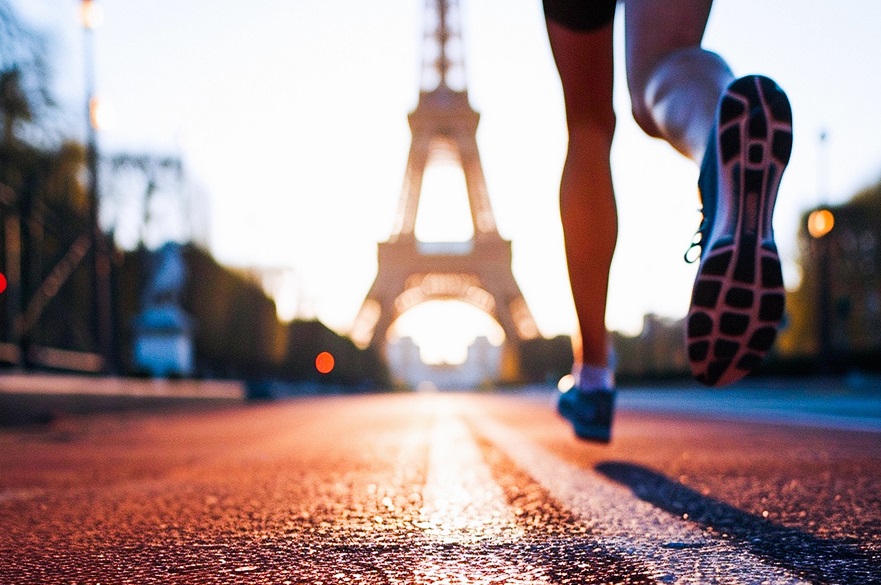Expert blog: Supporting mothers’ return to sport post-pregnancy - from Olympic athlete to the recreationally active
By Katie Reeves, PhD researcher in the School of Science and Technology
Published on 16 July 2024
Categories: Press office; Research; School of Science and Technology;

In 1990 only 22 women – 2.2% of competitors – participated in the Olympic Games in Paris.
Thirty four years on and Paris 2024 is set to be the most gender equal Olympics yet with over 85% of the sports considered to be gender equal and more than half of the medal events open to female athletes.
The number of female athletes returning to elite sport following pregnancy has grown in recent years.
Several female athletes have spoken out about their experiences, which is helping to pave the way for others and showing that pregnancy does not have to result in the end of their professional athletic career.
Shelly-Ann Fraser-Pryce (Jamaica), Bianca Williams (Great Britain), Laura Kenny (Great Britain), Sarah Storey (Great Britain), Helen Glover (Great Britian) and Allyson Felix (United States of America) are among some of these women.
Following a challenging pregnancy, Shelly-Ann Fraser-Pryce gave birth to her son in 2017. Despite her recovery from the caesarean delivery taking longer than expected, she returned at the 2019 World Championships and became the first mother and oldest woman to win the 100m.
Bianca Williams gave birth to her son just two days before the first lockdown and then returned to training six weeks later. She has spoken about the challenges she faced due to not receiving extra help due to lockdown and her male coach not understanding her needs as a new mother. She is already a European and Commonwealth gold medallist but Paris 2024 will be her first Olympic games.
At an organisational level, for the first time ever, there will be an on-site nursery in the Olympic and Paralympic village at Paris 2024, including safe play areas and private breastfeeding and changing facilities.
The nursery is said to be available to parent athletes and their children of nappy-wearing age to help ensure balance between sport and childcare as well as allowing athletes to spend quality time with their children. This is a big step as children have always previously been banned from the Olympic and Paralympic village. Breastfeeding mothers will also be allocated designated spaces near the athletes village to allow them to feed their child(ren) further supporting the mother-athlete balance.
Limited guidance has been available for elite mothers returning to sport post-pregnancy, but some progress has been made in recent years to support these athletes. The 6 Rs framework has been developed to guide multidisciplinary teams working with perinatal athletes and their return to sport following pregnancy and has been supported by Absolute Physio, The Active Women’s Clinic and England Rugby.
Despite these strides at the elite level, physical activity levels during and after pregnancy in the general population are still a cause for concern. Previous research reports that less than a third of pregnant women worldwide meet the recommended physical activity guidelines. Unfortunately, these issues continue after pregnancy with less than a quarter of mothers reported to not return to running following pregnancy. Comparing these figures to non-pregnant women, in 2022 it was reported that 61% of these women were considered physically active.
It is well known that regular physical activity provides a range of physical health and psychosocial benefits. For pregnant and post-natal women, additional benefits of being physically active include reduced risk of preeclampsia, gestational diabetes mellitus and post-partum depression, as well as increased muscle strength.
Despite these benefits, pregnant and post-natal women also face additional barriers towards physical activity, likely explaining the low physical activity rates. Research has identified childcare issues, tiredness, pain/discomfort, lack of facilities, time and supportive clothing as barriers to physical activity for these women.
Lack of supportive clothing includes breast support, with research identifying that only 15% of purchasers of maternity/nursing sports bras find what they want either online or in-stores. The main issues with these products are reported to be lack of support, discomfort, style and bra fit. Pregnant and post-natal women feel that future products should prioritise support and comfort, highlighting further product developments should meet the user group’s needs.
In addition, more than half of mothers feel that the method of feeding their child(ren) influences their participation in physical activity. This highlights the need for a well-fitting sports bra for pregnant and post-natal women to improve their breast health, allow easy nursing access for breastfeeding mothers and ensure a lack of supportive clothing is no longer a barrier to being physically active.
It is great to see the progress that is being made in professional women’s sport and redefining the perception that women cannot be athletes and mothers at the same time.
The changes being made at Paris 2024 will hopefully further support the mother-athlete relationships and show younger athletes that it is possible.
However, it is clear there are still multiple barriers for pregnant and post-natal women to being physically active and these must be addressed through research and product development.